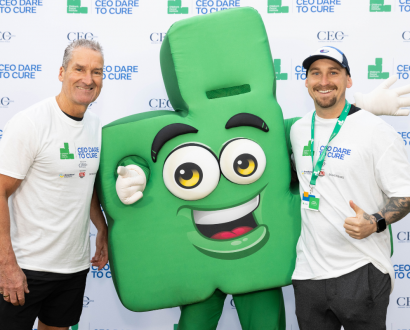We may live in ‘the lucky country’, but that cannot change the reality that on any given night, one in 200 Australians are sleeping rough on the streets or couch surfing, according to Homelessness Australia.
Sadly, around half of homeless people in Australia are under the age of 25, according to the NSW Advocate for Children and Young People (ACYP). However, the actual number of children and young people experiencing homelessness is likely to be much higher.
Couch surfing is homelessness in its invisible form
One reason why assessing the actual number of homeless young people in Australia is so difficult is that many mothers with children and young people experience homelessness as couch surfing. This refers to sleeping rough at different people’s houses, in cars or in shelters because one’s home is no longer safe.
How does the cycle of youth homeless begin?
Children and young people often become homeless to escape home environments of domestic violence, sexual assault, emotional abuse, alcoholism and drug addiction, chronic illness and family bereavement – all which can result in neglect, whether intentional or circumstantial.
Drivers behind the cycle of youth homelessness:
-
Ethnic background.
When parents are born overseas, it can be difficult for them to overcome language barriers and cultural differences, and to access support services and find employment. In the worst-case scenario, parents have to get low level, poorly paid jobs, impacting the status within the family and sometimes leading to domestic violence.
-
LGBTQIA+ sexuality.
Another significant factor is sexuality. Some families treat young people who reveal their LGBTQIA+ sexuality abusively or force them to leave home. Around 30% of young people in our care at Stepping Stone House identify as LGBTQIA+.
-
Parents with mental health issues.
Sadly, some parents simply have mental health issues which prevent them from being able to support and nurture their children, despite their best intentions.
-
Poor parenting skills.
There is no universal ‘right’ way to be a parent, but some parents struggle more than others. When an adult doesn’t understand key skills such as open communication and emotional nurturing, poor parenting can result.
Is there a solution?
A combination of long-term support, care and life skills development for young people at risk; early intervention and education among families; and parenting programs in schools and communities can end the cycle of youth homelessness in Australia.
Early intervention and education are essential to good parenting
Good parenting skills are fundamental in helping parents to care for their children effectively. As a society, we need to actively teach good parenting skills in schools and communities.
At Stepping Stone House for example, we do a lot of restoration work and counselling within families. We reconnect families with estranged children as soon as possible, because early intervention is statistically more successful. A trained social worker will act as a mediator and monitor the rebuilding of relationships between parents and children.
Early intervention is a very effective strategy for reducing the risk of youth homelessness. When parents can access professional advice from counsellors, mentors and online resources about how to tackle problems like alcoholism, family conflict and domestic violence, the child may be able to continue living with their family and avoid having to go into care.
Long-term care builds a brighter future for homeless young people
One of the best strategies we can use to end the cycle of youth homeless is for the Australian government to extend support for young people leaving Out-of-Home-Care (OOHC) from 18 to 21 years old, so that they secure employment and complete their education.
We are seeing our own children leaving our homes at (on average) 24 years old because the cost of rentals in the major cities is outside what they can afford during their tertiary education. The government needs to ensure that children and young people in care have ongoing support from childhood through to young adulthood.
It takes a village to raise a child
The adage of ‘it takes a village to raise a child’ is key to ending youth homelessness in Australia. Every community member has a responsibility to report children being neglected or abused to Family and Community Services.
As I previously mentioned, early intervention is one of the most effective strategies for ensuring that children are not mistreated, neglected or forced to leave home. By working together as a society, we can help young people at risk of homelessness to build a brighter future.






Great article Jason.